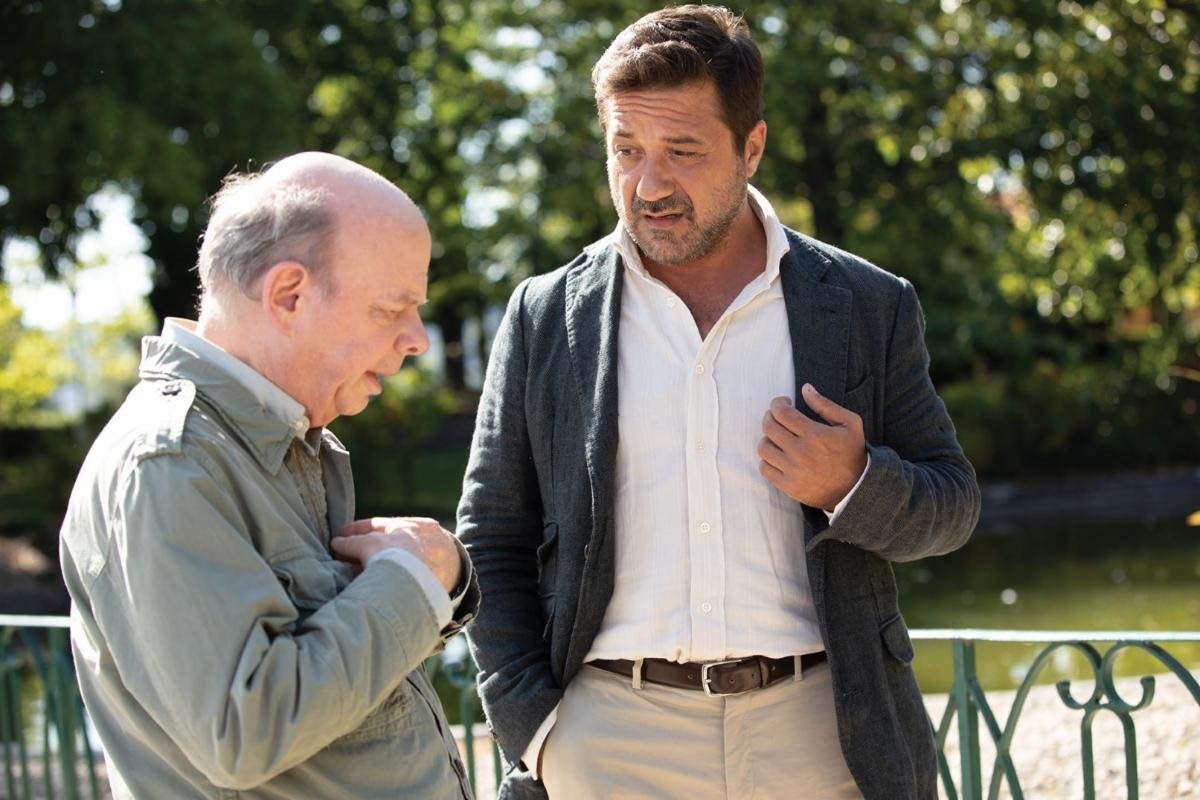MOVIE REVIEW: Rifkin's Festival
RIFKIN’S FESTIVAL– 2 STARS
Even with a blindfold, an astute movie fan could play “Pin the Tail on the Proxy” with the films of Woody Allen from the past two decades. The likes of Timothee Chalamet, Justin Timberlake, Jesse Eisenberg, Colin Firth, Joaquin Phoenix, Owen Wilson and others have taken on the signature scripted blather of the male leading roles the writer-director used to play himself when he was younger than the 86 he is now. For his newest film, Rifkin’s Festival, cherished character actor Wallace Shawn assumes the short New Yorker vessel for this romantic comedy jaunt.
The 78-year-old plays Mort Rifkin, a self-described “Grinch” of a film critic and former college professor of senior age, attending the prestigious San Sebastian Film Festival in Spain. He’s not there in a professional capacity covering the international slate. Instead, he’s tagging along with his much younger wife Sue, played by Gina Gershon (19 years his junior). Sue is the press agent for Phillippe (Louis Garrel of Little Women and The Dreamers), a rising star film director with a top flight entry in the festival.
While she’s chasing her promotional work duties (and then some, wink wink, with a man 21 years younger than her), Mort is left to his own devices for the weekend. When he’s not playing the disinterested third wheel between Sue and Phillippe, he’s catching up with old colleagues and soaking up the local Bay of Biscay sights and citizens. It’s a lovely cardiologist named Dr. Joanna Rojas (Elena Anaya of The Skin I Live In) that catches his eye the most in San Sebastian.
LESSON #1: DREAM YOUR TROUBLES AWAY– Mort was recommended to her after having a little heart episode due to a recent rash of dreams he’s been having. At his age and full of rational and irrational fears, his existential dread has been kicking up and manifesting itself to him (and us) through black-and-white dreams that place him and his family members in scenes from classic movies including Citizen Kane, 8 ½, Persona, and more. It’s in these cheeky sequences where Rifkin’s Festival shows off a bit.
LESSON #2: WHAT’S IT ALL ABOUT AND WHY ARE WE HERE– As Mort states, “The big questions are the only questions worth asking. The rest are all trivial.” Questioning what life is all about is nothing new for a Woody Allen film or dozens of others from younger or lesser filmmakers. The conceit is how to visualize those questions and hook the viewer in a unique way. To Allen’s credit, there’s an endearing level of charm to be had in Rifkin’s Festival watching Mort shuffle through these Criterion-stamped homages with his observations and dueling sense of appreciation and lamentation.
If Rifkin’s Festival entirely hung around in this cinephile headspace, framed by Mort telling this whole story to his therapist, that would be an engaging experience backed by Stephane Wrembel’s trusty jazz guitar and worthwhile with playful potential. Likewise, the same can be said for the promise of its gorgeous surroundings that return Woody Allen to Europe. Captured by the legendary three-time Oscar-winning cinematographer Vittorio Storaro (his fourth straight collaboration with Allen), the stunning Spanish coastal locale is an urbane and lush setting that couldn’t look ugly if it tried. Clean style is never this movie’s problem.
What drags this movie down are the lackluster hours when the characters are awake. With zero surprise, Mort is the curmudgeon square that doesn’t fit the festival scene and its manufactured decadence. Behind the red carpets and hotel doors, the plain-as-day obviousness of his empty marriage to Sue is nowhere near as interesting as what’s playing in his mind with those dreams.
Elena Anaya’s lovely presence should be a lift, but she is a poorly conceived distraction clearly written by the out-of-touch version of Woody Allen that has become all too prevalent in recent years. There’s a scene where the doctor’s own marriage is crumbling over the phone and all Mort can talk about is New York casual dining spots. It is cluelessness to the real emotion because it doesn’t serve him. Those dismissive realizations and hammy forced coincidences chip away at any assertiveness to occupy these situations with any heft. A movie like this can’t dangle the existential and then whiff when something pretty walks by.
Rifkin’s Festival counts as a showy opportunity for Wallace Shawn. The prolific supporting actor of both stage and screen has been underused as a lead for years. His wily veteran moxie fits being the vessel for Woody Allen’s pace of verbal dithering. This is Wallace’s sixth Woody Allen film, something he’s been very open about, especially considering the filmmaker’s very questionable industry and public standing. The man has his reasons which, for many, will be difficult to fully respect. Nevertheless, Wallace Shawn makes the most of this scrambled material.
LESSON #3: TRIVIAL OPINIONS AND FOOLISH INSINCERITIES– Shawn has a short monologue where he calls out people “exchanging trivial opinions and foolish insincerities.” He construes that it’s a line a leading man would drop to sweep a girl off her feet. It is indeed a cool line, if the movie itself actually played that out. The preposterous age gaps of all the romantic players involved strain even the most accepting audience. Moreover, the flippant behavior everywhere reinforces the pedantic and high brow taste of Rifkin’s Festival trying to make its ineffectual dreaminess up as it goes.
LOGO DESIGNED BY MEENTS ILLUSTRATED (#1012)







